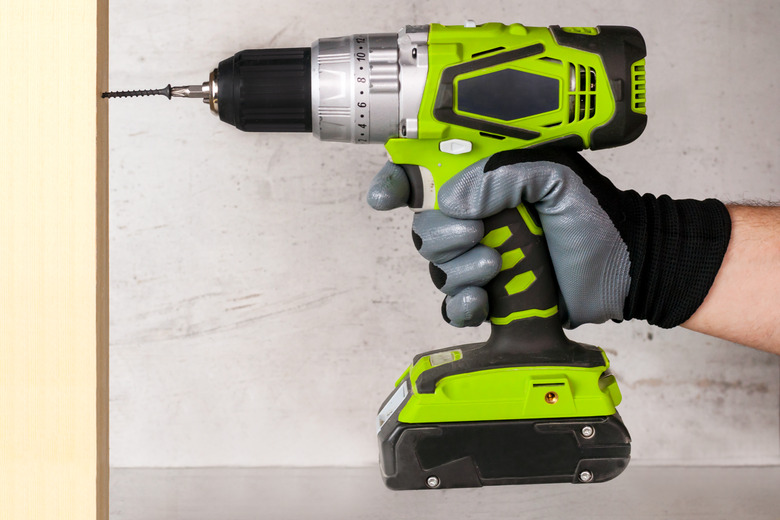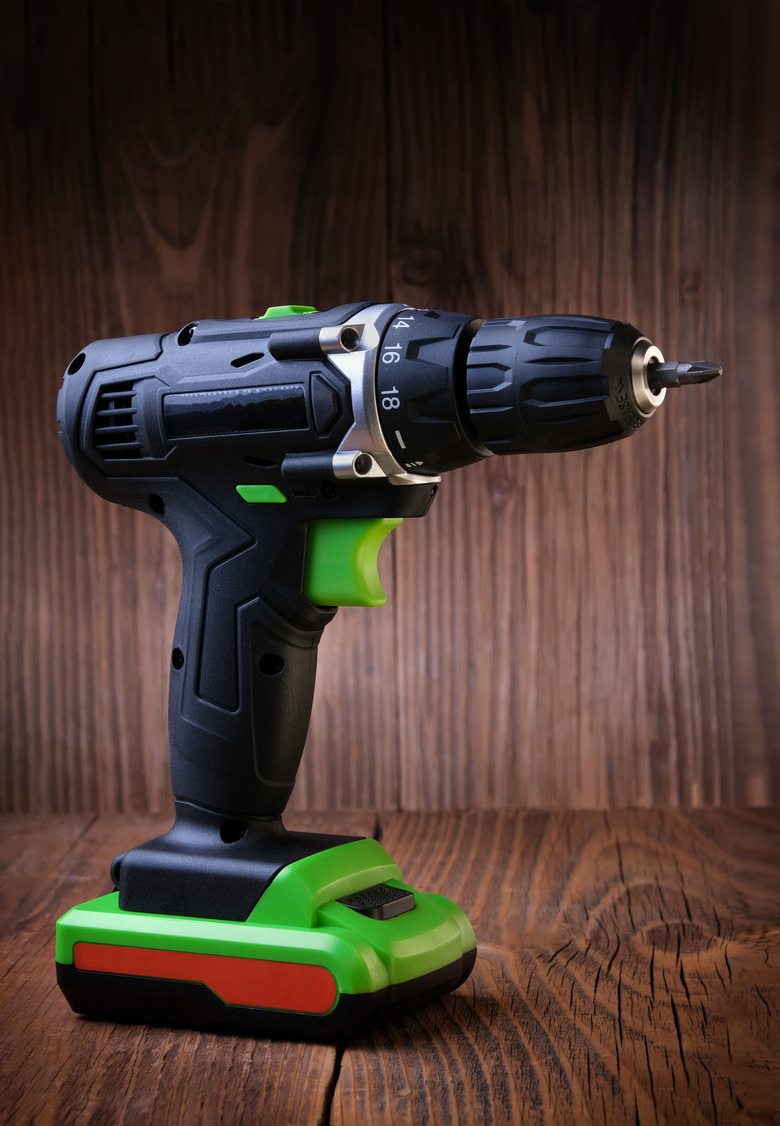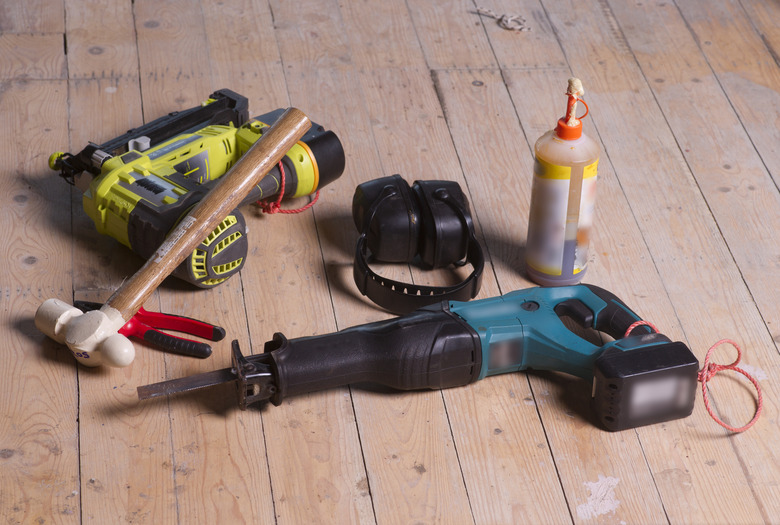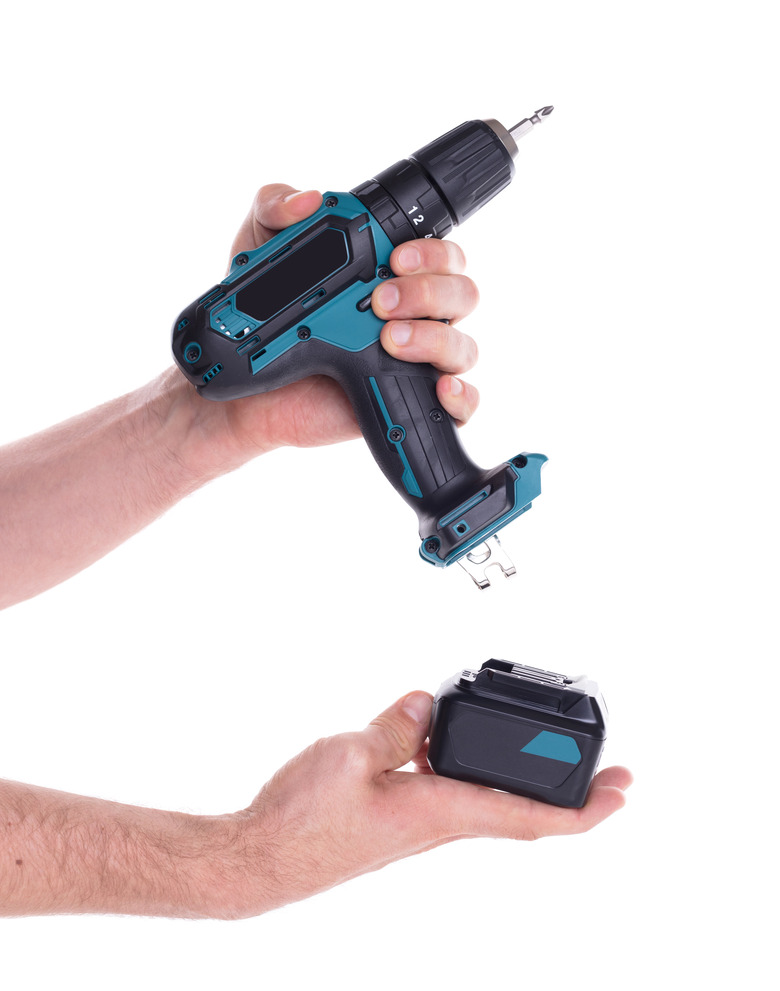How To Extend The Life Of Power Tool Batteries
While a cordless power tool offers unparalleled convenience compared to its plug-in sibling, it's not entirely foolproof. The lifespan of its rechargeable battery depends upon how you use—or even fail to use— the tool, and how you store the battery when it's not being used. A few "best practices" help ensure those rechargeables last as long as the tools that require them.
Plug and Play, Frequently
Plug and Play, Frequently
Old-fashioned nickel-metal hydride, or NiMH, laptop batteries used to require an occasional complete discharge to restore the battery's original lifespan. This happens when low-power batteries are used the same way day-in and day-out, developing a "memory." The same isn't true for most rechargeable tool batteries, largely because tool use draws a lot of energy and in a more sporadic manner than a laptop. Charge a NiCad battery when it drops down to 70 percent or when it shows signs of some power loss. A lithium-ion battery may not show a power loss until it's completely drained. Since a large project may require continual tool use, its helpful to keep a spare, fully charged battery on hand.
If you haven't used the tool in a while and put it away with a fully charged battery, don't expect the battery to have a full charge upon next use. The battery drains even when not in use. A NiCad battery loses quite a bit of power over the first three days of non-use, while a lithium-ion battery does a better job of retaining its power. In either situation, pop the battery back onto the charger for at least a few minutes to determine whether the battery still has a full charge. For a battery that has a built-in fuel gauge, press that instead.
For seasonal tools such as a weed trimmer or snow blower, charge the battery every six months or so.
Moderate Temperature, Most Battery Life
Moderate Temperature, Most Battery Life
The temperature of the battery while it charges also affects its lifespan. If you are using a battery outdoors on a cold winter day, charging it outside could result in permanent damage that shortens battery life. The same holds true when charging a battery that's been exposed to summer heat and full sun all day. If you've used the battery in extreme conditions, allow it to sit for a few hours indoors, or in a location where it can reach room temperature, before charging it. If the battery feels hot after you've used it for a while, it also needs to cool to room temperature before charging. Some chargers, such as those made for Ryobi lithium-ion weed trimmer batteries, will not even charge a battery until it reaches a moderate temperature.
Self-Protecting Batteries
Self-Protecting Batteries
Battery life shortens significantly when used in high-torque situations or when the tool's motor is under heavy continual load. The battery may overheat, which could shorten its usable lifespan. Many newer lithium-ion batteries, such as those made for Milwaukee tools, feature intelligent circuitry that automatically shuts off power when under intense load. In this case, a series of lights flashes on the battery. The battery must cool again before reuse.
This same gauge will flash in a different way when the battery is about to run out of power during use, requiring a charge. Note: Different brands have different light setups and different "codes" of flashing lights on their battery packs. Read the manual or consult the manufacturer's site for clarification on specific batteries, as each company has its own way of dealing with various battery conditions.
Protect Those Loose Batteries
Protect Those Loose Batteries
Although power-tool batteries are durable, they're still prone to damage from rough or improper handling. On a project site, keep loose batteries stored in separate compartments in a padded bag or in the original tool cases, protected from direct sunlight and rain. Make sure the batteries are kept in a moderate environment, not inside a hot vehicle. At home, keep batteries in storage cases, or at the very least in a dry, room-temperature location protected from dust and away from heat sources and pilot lights. Cover the terminals with the plastic cap that came with the battery. That cap helps prevent scratches, moisture damage and even short circuits. Even with the cap in place, it's best to keep conductive metal objects away from the battery, especially the terminals, to prevent fires.
Storage On the Charger
Storage On the Charger
Not all battery chargers are created equally, so reading the tool's manual is the key to ensuring maximum battery life. For instance, leaving a typical tool battery on the charging base with the charger plugged in could overcharge the battery and shorten its life. Many companies recommend removing the battery from the charging base after the battery is charged. Some companies, such as Dewalt, recommend leaving the battery on the charging base with the base plugged in, thanks to a maintenance mode that keeps a battery fully charged, ready to use. If you've lost the manual for the tool, check the company's website. Many companies and even big-box stores offer downloadable manuals for fairly current tool models.
Keep Batteries Away from Moisture
Keep Batteries Away from Moisture
Moisture and tool batteries don't mix. This applies to using cordless tools in rainy weather, as well as storing the tool or battery in an area where it may get wet. A few drops of rain won't be an issue, but working in a steady rain could cause electric shock and also ruin both the battery and the tool.
Storing a loose battery in a damp, humid environment could cause its terminals to corrode, making it harder to charge the battery. Moisture can also seep into the battery housing, permanently damaging the battery. Do not use a battery that has been submerged in water or that shows signs of moisture damage.
When Battery Life Shortens
When Battery Life Shortens
If the tool battery doesn't seem to last as long as it should, drain its power down to nothing, then charge it completely before using it again. If the battery still seems to have a decreased lifespan, it may be time for a new battery. All rechargeable batteries have limited lifespans. For instance, a battery designed to last for 100 full charges can handle 200 charges made when the battery is at 50 percent power. The battery should work as well as always during most of that 100-charge lifespan. If you've had the battery for years and charged it hundreds of times, it's probably time to buy a replacement.
Dealing with Dead Batteries
Dealing with Dead Batteries
Don't throw those old rechargeable batteries in the trash. Instead, take them to a big-box home improvement store or other battery-recycling location in partnership with Call 2 Recycle, a non-profit organization. This group offers battery dropoff bins in most states; use its online map to locate a recycling location near you. These sites also accept other rechargeable batteries and old cell phones. If you don't live near a dropoff location, call the local city hall or trash pickup company. In many cases, a community or county offers special pickup locations and times to get rid of items such as batteries and old phones or computers.



